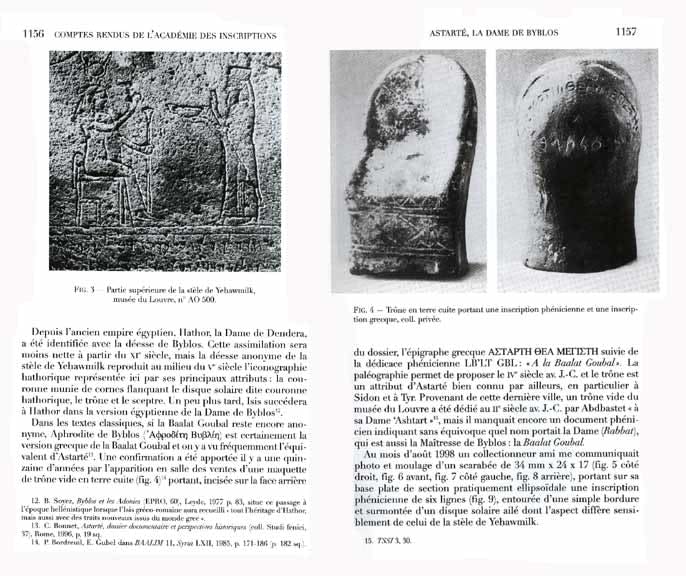Phoenician Green Jasper Scarab Seal Inscribed with the Name of the Goddess Astarte, 6 Century BCE - 4th Century BCE
Green Jasper
3 x 2 cm
1 1/8 x 3/4 in
1 1/8 x 3/4 in
X.0505
Further images
Although the scarab amulet was a uniquely Egyptian innovation, it soon became assimilated into many other cultures that were in contact with the Ancient Egyptians. Foremost among them were the...
Although the scarab amulet was a uniquely Egyptian innovation, it soon became assimilated into many other cultures that were in contact with the Ancient Egyptians. Foremost among them were the neighboring Phoenicians who inhabited the lands of modern Lebanon as well as widespread territories throughout the Mediterranean. The Phoenicians are believed to have been descendants of the ancient Canaanites, as both these cultures shared many of the same religious beliefs and social customs. The earliest excavated Phoenician scarabs date from the 8th century B.C. They were primarily used as intaglio seals and feature a broad range of scenes and styles including Egyptian motifs, native Phoenician and Syrian subjects, and subject matters that were derived from Greek art. A remarkable series of rich green jasper scarabs such as this one were produced in Phoenicia throughout the Persian Period, roughly from the late 6th to the middle of the 4th century B.C. Most of these green jasper scarabs have been unearthed in cemeteries of the Punic west, including Carthage as well as Sardinia and Ibiza. However, there are many indications that they originally came from the eastern homeland.
This gorgeous green jasper scarab seal pendant is a fantastic example of this fascinating series. The carving of the scarab is quite basic, with etched details highlighting the basic oval shape of the beetle’s body. A drilled hole penetrates the center of the base and would have allowed this piece to have been worn as a pendant. However, the most intriguing aspect of this scarab is the inscription that has been etched onto the bottom of the base. This inscription, written in the Phoenician alphabet, can be translated as: “To the goddess, to Astarte, the Lady of Gebal (Byblos), who grants her favor over its people.” What is especially noteworthy here is that the mother goddess is referred to by her Syrian name of Astarte instead of the traditional Phoenician name Ba’alat Gebal, meaning “the goddess of Byblos.” Astarte, the Western Semitic counterpart of the Mesopotamian goddess Ishtar, was a fertility goddess whose origins predate the Canaanite era. Her cult was centered in ancient Syria, although she was worshipped in many manifestations throughout the Eastern Mediterranean. The Greeks even assimilated this goddess into their culture, associating her with their native Aphrodite. Is it possible that this scarab seal was carved for a Syrian merchant who lived in Byblos? This might explain the goddess being referred to by a foreign name. The powerful goddess Astarte was worshipped by a variety of cultures who each called her by a different name. This magnificent scarab attests both to the widespread nature of her cult as well as the profound influence Egyptian art and culture had on their neighboring civilizations.
This highly important and very rare Phoenician scarab was published by Pierre Bordreuil in his text entitled, "Astarte, La Dame De Byblos," for the Academie des Inscriptions & Belles-Lettres, Paris, 1998.
This gorgeous green jasper scarab seal pendant is a fantastic example of this fascinating series. The carving of the scarab is quite basic, with etched details highlighting the basic oval shape of the beetle’s body. A drilled hole penetrates the center of the base and would have allowed this piece to have been worn as a pendant. However, the most intriguing aspect of this scarab is the inscription that has been etched onto the bottom of the base. This inscription, written in the Phoenician alphabet, can be translated as: “To the goddess, to Astarte, the Lady of Gebal (Byblos), who grants her favor over its people.” What is especially noteworthy here is that the mother goddess is referred to by her Syrian name of Astarte instead of the traditional Phoenician name Ba’alat Gebal, meaning “the goddess of Byblos.” Astarte, the Western Semitic counterpart of the Mesopotamian goddess Ishtar, was a fertility goddess whose origins predate the Canaanite era. Her cult was centered in ancient Syria, although she was worshipped in many manifestations throughout the Eastern Mediterranean. The Greeks even assimilated this goddess into their culture, associating her with their native Aphrodite. Is it possible that this scarab seal was carved for a Syrian merchant who lived in Byblos? This might explain the goddess being referred to by a foreign name. The powerful goddess Astarte was worshipped by a variety of cultures who each called her by a different name. This magnificent scarab attests both to the widespread nature of her cult as well as the profound influence Egyptian art and culture had on their neighboring civilizations.
This highly important and very rare Phoenician scarab was published by Pierre Bordreuil in his text entitled, "Astarte, La Dame De Byblos," for the Academie des Inscriptions & Belles-Lettres, Paris, 1998.











